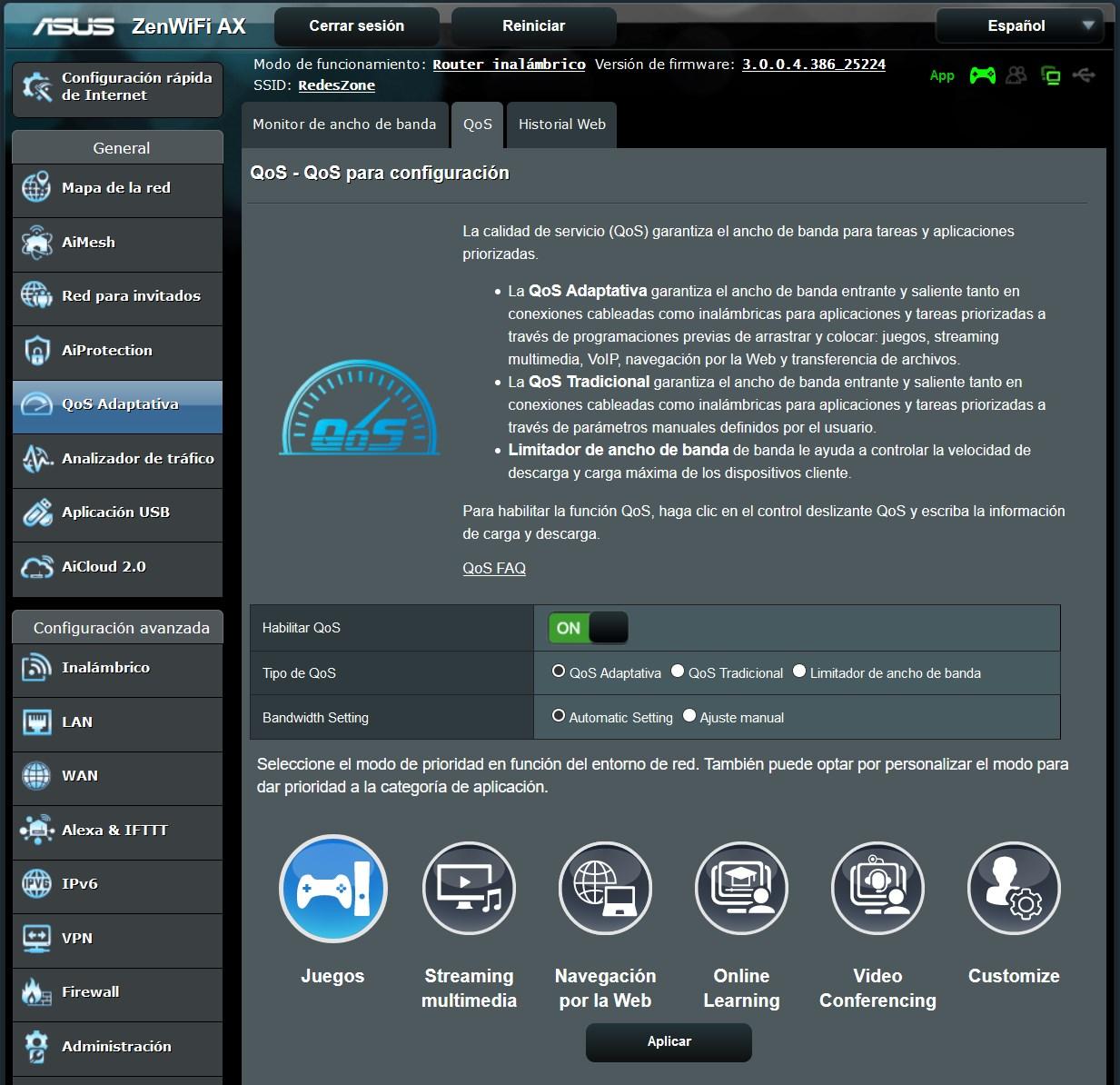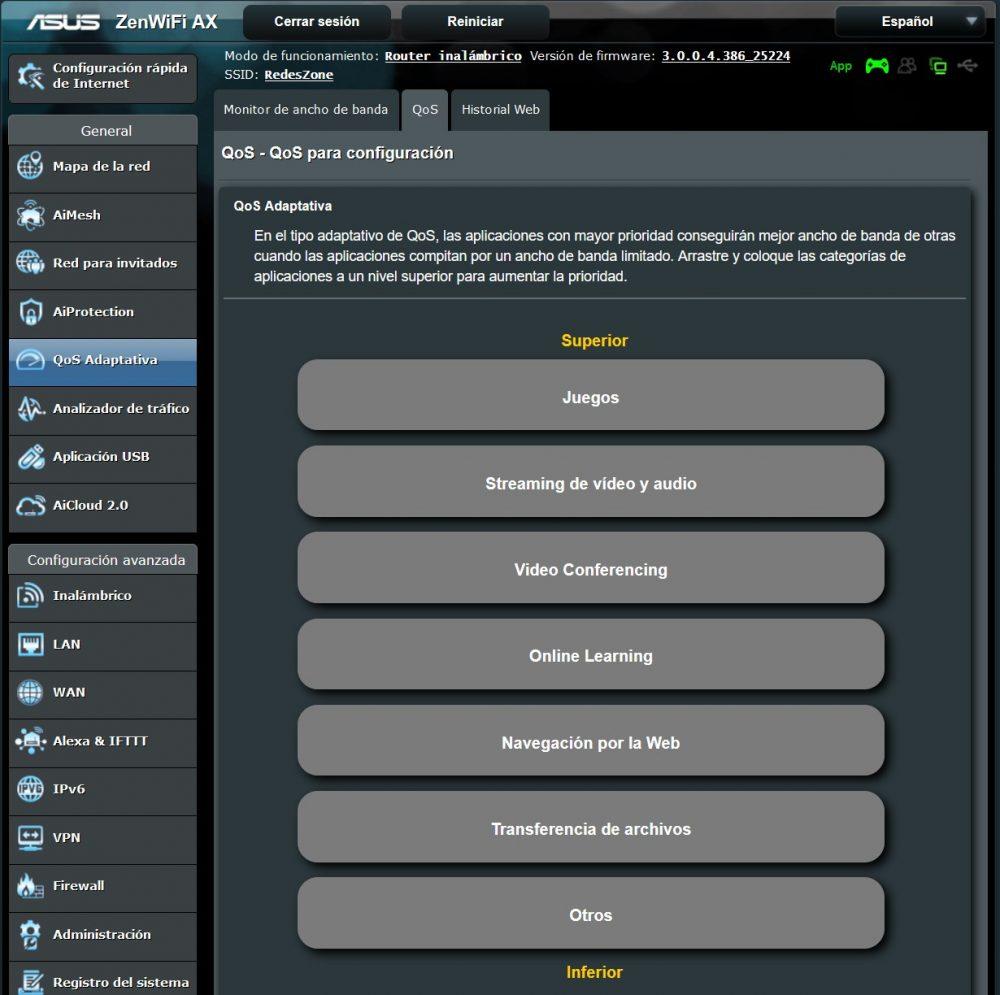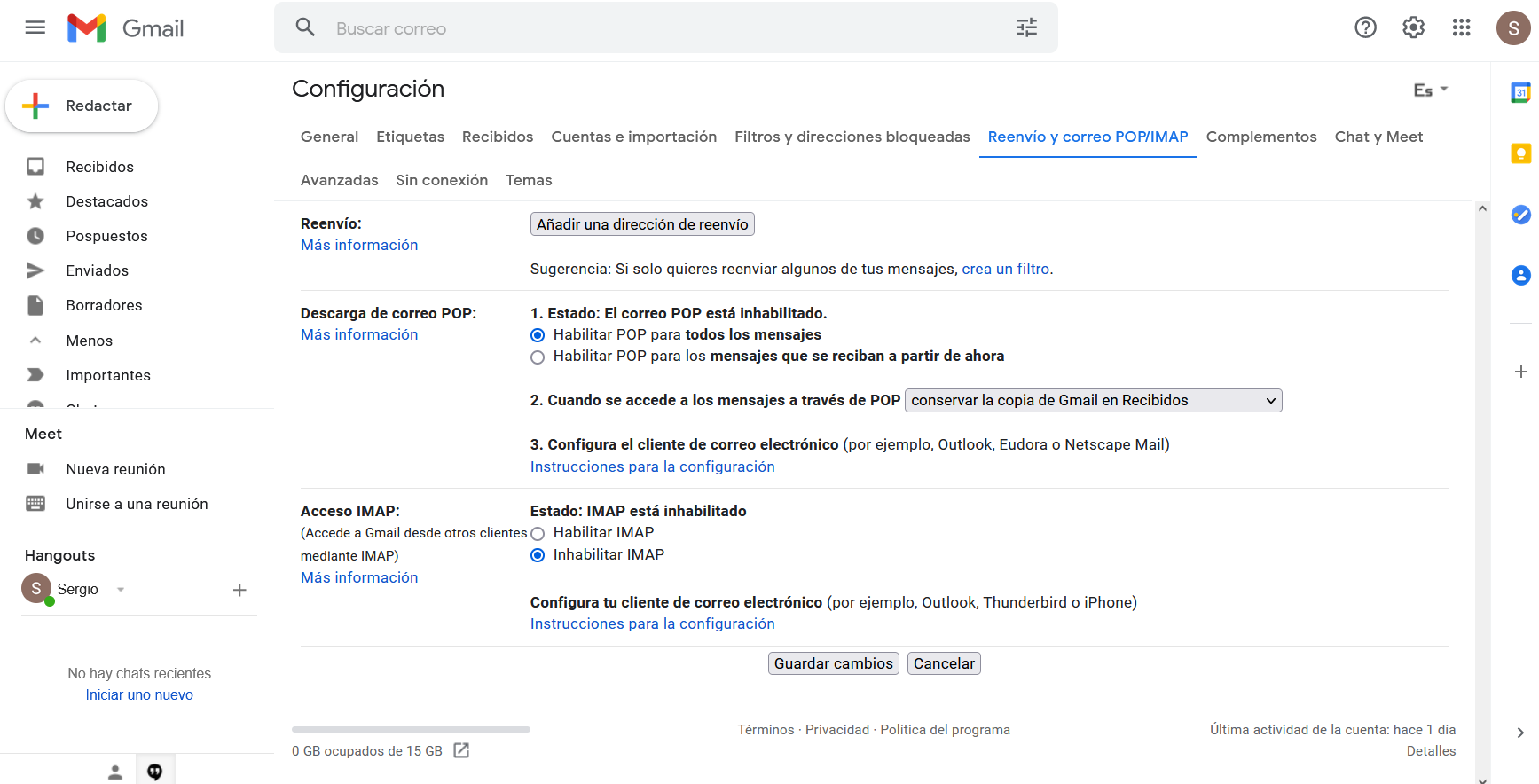
On many occasions, when we go to watch a YouTube video, stream a movie or series with any online platform such as Netflix, Amazon Prime Video, Disney+ or any other, we see that there is a problem in the network and that the video drops from quality, or the image stops directly because you do not have a good Internet connection continuously. If this is your case and it always happens when you have other devices connected by cable or WiFi to your router, you must make a very simple adjustment to avoid it. Next, we are going to explain what you should configure and why you should do it.
This is how the QoS of your router works
He QoS (Quality of Service) of routers allows us to guarantee bandwidth for tasks and applications that we want to prioritize over others. For example, if we configure the QoS to “mark” the game packets, and that these have priority over other types of traffic, such as P2P downloads, it means that the games will have priority over the downloads, which could make P2P programs not be as fast as we hope for precisely this reason.
In home routers, different types of technologies tend to coexist to mark traffic, however, in most of them it will allow us to configure an order of priority of what interests us. In this way, we can give top priority to online games and video calls, these two uses require low latency and low jitter, otherwise the user experience will be disastrous. As a last priority, we can put the P2P programs since it is not necessary that they download at the maximum possible speed, harming the rest of the home network.
It is possible that our router only has a bandwidth limiter per device, in these cases, the most common thing is to configure the NAS server or PC with which we are downloading so that it does not occupy all the Internet bandwidth. For example, if we have a 600Mbps Internet connection, the usual thing is to limit it to about 200Mbps symmetrical, and that it does not affect the rest of the computers on the local network too much.
Configuration on any router
If you have a good ASUS, AVM, D-Link, NETGEAR or QNAP router, among other leading brands, you will have a specific QoS menu available where we can perform the prioritization that we want. Our favorite brand of routers for these cases are ASUS, since they are equipment that is specifically prepared to provide the best user experience in online games and also in streaming, by having a fully configurable QoS.
If we go to the section «General / Adaptive QoS«, and click on the « tabQoS«, we choose «Adaptive QoS«. Subsequently, we must choose what type of use we want to have the highest priority, the usual thing is online games, but we can also define the «media streaming” without any problem.
In the event that we want a specific order of priority, we must select the option “customize» with the objective of selecting from highest to lowest what will be the priority that we want to provide. The most normal thing is to give maximum priority to games and video streaming, and then the rest of the uses, as you can see here:
Once we have the QoS configured, we will notice the following on the network:
- If we are using YouTube or Netflix, we can notice that it will not be cut and that the videos load quickly because they have the highest priority, even if there are many other devices connected to the local network.
- If we use P2P programs at the same time that we use YouTube or Netflix, we can see that all downloads work a little slower than normal, because they do not have priority. The same happens if we make FTP transfers or with any other protocol, they will have low priority.
In a network, it is not possible to prioritize everything, many people make the mistake of trying to prioritize everything, and that is not possible to do. If we prioritize everything, it means that we are not really prioritizing anything, and we will continue to have the same problems as always.




